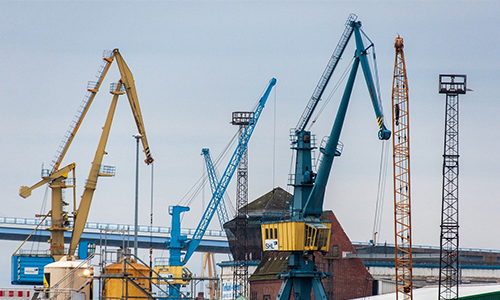Smart Agriculture with IoT-Enabled Irrigation Systems

Client
A renowned winery focused on producing high-quality grapes and wine.
Background
Winemakers aim to increase grape yield and enhance wine quality. IoT technology can significantly aid in achieving these goals by optimizing farm operations.
Problem
Efficiently managing a vineyard’s irrigation system (pumps and valves) and automating it to irrigate only when necessary is crucial. This approach helps reduce water waste and achieve significant savings on water consumption.
Urbana’s Solution
To address water resource management, Urbana Smart Solutions proposed an IoT-based system to monitor and control water supply to the soil. This solution enables farmers to stay updated with changing agricultural conditions by using wireless sensors to monitor soil temperature and moisture. By collecting and analyzing this data, farmers can better plan and distribute irrigation, achieving optimal results with less water usage.
Results
By implementing Urbana’s IoT solution, the winery achieved:
-
Improved irrigation efficiency
-
Reduced water waste
-
Enhanced grape yield and quality
-
Significant savings on water consumption
-
Streamlined vineyard management operations
Key Features and Benefits

Soil Parameter Analysis
Monitors soil temperature and moisture at six different depths, helping identify how vine roots are irrigated and detect areas with varying water concentrations.

Water Consumption Analysis
Tracks water usage through main meters to optimize consumption.

Irrigation System Management
Provides overall management of the irrigation system (pumps and valves) to ensure precise irrigation where needed, optimizing water use, reducing waste, and minimizing manual operations.

Meteorological Data Analysis
Monitors parameters such as pressure, dew point, temperature, humidity, wind direction and speed, rainfall, and solar radiation. This data helps make informed decisions about vineyard operations and automate the irrigation system.
Other Case Studies

Smart Building
Implementing IoT and automation technologies to improve building management, energy efficiency, and occupant comfort. Applications include smart lighting, HVAC systems, security, and building automation systems.

Smart City
Leveraging IoT and digital technologies to create efficient, sustainable, and livable urban environments. Key features include smart transportation, energy management, waste management, and enhanced public services.

Industry
Enhancing efficiency, safety, and productivity in manufacturing, logistics, and other industrial sectors through innovative IoT applications.
Frequently Asked Questions
What are IoT solutions in agriculture?
IoT solutions in agriculture involve using Internet of Things (IoT) technology to monitor and manage various farming operations. These solutions include sensors, devices, and software that collect and analyze data to improve efficiency, productivity, and sustainability in farming.
How can IoT improve irrigation systems?
IoT can improve irrigation systems by providing real-time data on soil moisture, weather conditions, and water usage. This allows farmers to automate irrigation schedules, reduce water waste, and ensure crops receive the optimal amount of water.
What types of sensors are used in smart agriculture?
Smart agriculture uses various sensors, including soil moisture sensors, temperature sensors, weather stations, and water flow meters. These sensors collect data that helps farmers make informed decisions about irrigation, fertilization, and crop management.
How does IoT help in precision farming?
IoT helps in precision farming by providing detailed data on crop health, soil conditions, and environmental factors. This data enables farmers to apply resources like water, fertilizers, and pesticides more precisely, reducing waste and improving crop yields.
What are the benefits of using IoT in agriculture?
Benefits of using IoT in agriculture include improved resource management, increased crop yields, reduced operational costs, enhanced sustainability, and better decision-making based on real-time data.
Can IoT solutions help with pest management?
Yes, IoT solutions can help with pest management by using sensors and cameras to monitor pest activity. This data can trigger automated responses, such as targeted pesticide application, reducing the need for broad-spectrum chemical use.
How do IoT solutions contribute to sustainable farming?
IoT solutions contribute to sustainable farming by optimizing resource use, reducing waste, and minimizing environmental impact. They help farmers implement practices that conserve water, reduce chemical usage, and enhance soil health.
What is the role of data analytics in agricultural IoT solutions?
Data analytics in agricultural IoT solutions involves analyzing data collected from various sensors to provide actionable insights. These insights help farmers make informed decisions about crop management, irrigation, and overall farm operations.
How can IoT technology help in monitoring weather conditions?
IoT technology helps in monitoring weather conditions by using weather stations equipped with sensors to track parameters like temperature, humidity, wind speed, and rainfall. This data helps farmers plan their activities and protect crops from adverse weather.
Are IoT solutions scalable for large farms?
Yes, IoT solutions are scalable for large farms. They can be customized and expanded to cover extensive areas, providing comprehensive monitoring and management capabilities for large-scale agricultural operations.
